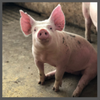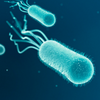-

Dec
27
Industry Groups Provide Comments to FSIS About Cell-Cultured Meat Labeling

NCBA agrees that the labeling of these products is important. Danielle Beck, Senior Executive Director of Government Affairs, noted a survey where 74% of consumers agreed that there should be a clear indication of whether the meat, they are purchasing is either lab-grown or conventionally produced.
Read more
-

Dec
27
FAO Publishes The State of Food and Agriculture 2021

The Food and Agriculture Organization of the United Nations (FAO) recently published The State of Food and Agriculture 2021. The report comes after the COVID-19 pandemic showed vulnerability within the agrifood system globally.
Read more
-

Dec
27
EPA Releases Report on Environmental Impact of Food Waste

The United States Environmental Protection Agency (EPA) has published From Farm to Kitchen: The Environmental Impacts of U.S. Food Waste, to inform policymakers, researchers, and the public about the environmental impact of food waste. The report includes benefits to reduced food waste as well as knowledge gaps.
Read more
-

Dec
27
Dairy Pricing Opportunity Act Introduced

The bill is designed to direct the United States Department of Agriculture (USDA) to initiate the process of holding Federal Milk Marketing Order (FMMO) hearings within six months to provide an opportunity for producers to have a seat at the table when any potential changes in how Class I milk prices are calculated is discussed.
Read more
-

Dec
27
Cures 2.0 Bill Introduced

“The federal government has shown, time and time again, that when it’s given the resources needed to accomplish the impossible, there’s not much it cannot do,” DeGette and Upton said in a press release. By creating ARPA-H, we will be bringing together some our nation’s greatest minds to help find cures to these devastating diseases.
Read more
-

Dec
27
Bipartisan Request to Hold Mexico Accountable on Biotech Policy

A bipartisan letter from more than 70 members of Congress was sent to President Joe Biden regarding the United States-Mexico-Canada Agreement (USMCA). The letter urges President Biden to pursue a declaration from Mexican President López Obrador that Mexico will follow the biotech provisions established in USMCA.
Read more
-

Dec
27
Bill to Protect Meatpacking Workers Introduced

During the height of the pandemic, it was revealed that over 59,000 meatpacking and processing workers contracted COVID-19, and at least 269 died. PAMWA would provide protections for meatpacking workers along with systemic reforms, such as creating a fair market that allows independent farmers, ranchers, and local food systems to succeed.
Read more
-

Dec
27
APHIS Issues Final Rule Regarding Handling of Animals

The United States Department of Agriculture’s (USDA) Animal and Plant Health Inspection Service (APHIS) has issued a final rule modifying the Animal Welfare Act (AWA) regulations to include a requirement for a contingency plan for the handling of animals during an emergency.
Read more
-

Dec
27
APHIS Announces Funds for Animal Health

The United States Department of Agriculture’s (USDA) Animal and Plant Health Inspection Service (APHIS) recently announced over $16.3 million to 64 different projects with states, universities, and other partners for animal health protection.
Read more
-

Dec
20
Interpretive Summary: Efficient approximation of reliabilities for single-step genomic best linear unbiased predictor models with the Algorithm for Proven and Young

The estimated breeding value (EBV) of an animal measures its genetic merit. For calculating EBVs, pedigree and genomic information are jointly used in a procedure called single-step genomic best linear unbiased prediction (ssGBLUP). Genetic evaluations report each EBV with its reliability, which measures how accurate the breeding value estimation was.
Read more
-

Dec
20
Interpretive Summary: Lycium barbarum polysaccharides alleviate LPS-induced inflammatory responses through PPARγ/MAPK/NF-κB pathway in bovine mammary epithelial cells

Current research examined Lycium barbarum polysaccharides (LBP) for combating LPS-induced inflammatory responses in primary bovine mammary epithelial cells. We uncovered a preventive role of LBP in reducing detrimental effects induced by LPS including inhibition of NF-κB and MAPK along with peroxisome proliferator-activated receptor-γ (PPARγ) activation.
Read more
-

Dec
20
Interpretive Summary: Selenium decreased cholesterol levels

A major goal in animal agriculture is to improve the nutritional value of animal products. One area of focus in the beef cattle industry is to use supplemental selenium to improve the antioxidant abilities of muscle and liver tissue, which may reduce the cholesterol levels of muscle tissue, resulting in a healthier product.
Read more
-

Dec
16
Interpretive Summary: Tissue Dimensions Captive Bolt Swine

Penetrating captive bolt is a commonly used and humane method for euthanizing swine that weigh less than 200kg.
Read more
-

Dec
16
Interpretive Summary: Altered fecal microbiota, IgA, and fermentative end-products in adult dogs fed prebiotics and a nonviable Lactobacillus acidophilus

Higher demand for nutrition beyond the basic requirements of the animal has increased in the pet food industry; specifically, using pre-and probiotic ingredients to influence digestive health.
Read more
-

Dec
16
Interpretive Summary: Relationship between energy intake and growth performance and body composition in pigs selected for low backfat thickness

The progression of genetic selection for reduced carcass backfat has increased over the past 20 years, causing an altered phenotypic relationship between energy intake and carcass backfat thickness.
Read more
-

Dec
13
Interpretive Summary: Increased microbial phytase increased phytate destruction, plasma inositol, and feed efficiency of weanling pigs...

Due to stress during the post-weaning period, morbidity and mortality can be significantly increased. These stressors can be environmental, nutritional, physiological, and immunological changes.
Read more
-

Dec
13
Interpretive Summary: Live yeast and yeast extracts with and without pharmacological levels of zinc on nursery pig growth performance and antimicrobial susceptibilities of fecal Escherichia coli

Feeding pharmacological levels of Zn in the early nursery phase has become a common practice in the swine industry to alleviate post-weaning diarrhea. However, antimicrobial resistance is a concern when feeding these levels.
Read more
-

Dec
13
Interpretive Summary: High inclusion rates of hybrid rye instead of corn in diets for growing-finishing pigs do not influence the overall growth performance and most carcass traits are not influenced by hybrid rye

Hybrid rye has shown minimal impact on growth performance and carcass characteristics when used to replace barley and wheat. The current study's objective is to evaluate the use of hybrid rye as a replacement for corn in diets for growing and finishing pigs without impacting growth performance, carcass characteristics, or meat quality.
Read more
-

Dec
09
Interpretive Summary: Impacts of high amylopectin starch cassava on plasma glucose and the growth performance of pigs

In this recent Journal of Animal Science study, researchers evaluated how cassava, a high amylopectin starch, impacted the performance and other metabolic parameters of growing pigs. Pigs were fed either a corn-soybean meal LP diet, a corn-cassava-soybean meal LP diet, or a cassava-soybean meal LP diet.
Read more
-

Dec
09
Interpretive Summary: Hydroxy-selenomethionine as an organic source of selenium in the diet improves boar reproductive performance in artificial insemination programs

This was the first study of record to evaluate the effects of hydroxy-selenomethionine as a dietary supplement for boards on raw semen characteristics and quality of seminal doses, as well as the reproductive performance achieved when used for artificial insemination.
Read more
 DecIndustry Groups Provide Comments to FSIS About Cell-Cultured Meat Labeling
DecIndustry Groups Provide Comments to FSIS About Cell-Cultured Meat Labeling NCBA agrees that the labeling of these products is important. Danielle Beck, Senior Executive Director of Government Affairs, noted a survey where 74% of consumers agreed that there should be a clear indication of whether the meat, they are purchasing is either lab-grown or conventionally produced.
NCBA agrees that the labeling of these products is important. Danielle Beck, Senior Executive Director of Government Affairs, noted a survey where 74% of consumers agreed that there should be a clear indication of whether the meat, they are purchasing is either lab-grown or conventionally produced. DecFAO Publishes The State of Food and Agriculture 2021
DecFAO Publishes The State of Food and Agriculture 2021 The Food and Agriculture Organization of the United Nations (FAO) recently published The State of Food and Agriculture 2021. The report comes after the COVID-19 pandemic showed vulnerability within the agrifood system globally.
The Food and Agriculture Organization of the United Nations (FAO) recently published The State of Food and Agriculture 2021. The report comes after the COVID-19 pandemic showed vulnerability within the agrifood system globally. DecEPA Releases Report on Environmental Impact of Food Waste
DecEPA Releases Report on Environmental Impact of Food Waste The United States Environmental Protection Agency (EPA) has published From Farm to Kitchen: The Environmental Impacts of U.S. Food Waste, to inform policymakers, researchers, and the public about the environmental impact of food waste. The report includes benefits to reduced food waste as well as knowledge gaps.
The United States Environmental Protection Agency (EPA) has published From Farm to Kitchen: The Environmental Impacts of U.S. Food Waste, to inform policymakers, researchers, and the public about the environmental impact of food waste. The report includes benefits to reduced food waste as well as knowledge gaps. DecDairy Pricing Opportunity Act Introduced
DecDairy Pricing Opportunity Act Introduced The bill is designed to direct the United States Department of Agriculture (USDA) to initiate the process of holding Federal Milk Marketing Order (FMMO) hearings within six months to provide an opportunity for producers to have a seat at the table when any potential changes in how Class I milk prices are calculated is discussed.
The bill is designed to direct the United States Department of Agriculture (USDA) to initiate the process of holding Federal Milk Marketing Order (FMMO) hearings within six months to provide an opportunity for producers to have a seat at the table when any potential changes in how Class I milk prices are calculated is discussed. DecCures 2.0 Bill Introduced
DecCures 2.0 Bill Introduced “The federal government has shown, time and time again, that when it’s given the resources needed to accomplish the impossible, there’s not much it cannot do,” DeGette and Upton said in a press release. By creating ARPA-H, we will be bringing together some our nation’s greatest minds to help find cures to these devastating diseases.
“The federal government has shown, time and time again, that when it’s given the resources needed to accomplish the impossible, there’s not much it cannot do,” DeGette and Upton said in a press release. By creating ARPA-H, we will be bringing together some our nation’s greatest minds to help find cures to these devastating diseases. DecBipartisan Request to Hold Mexico Accountable on Biotech Policy
DecBipartisan Request to Hold Mexico Accountable on Biotech Policy A bipartisan letter from more than 70 members of Congress was sent to President Joe Biden regarding the United States-Mexico-Canada Agreement (USMCA). The letter urges President Biden to pursue a declaration from Mexican President López Obrador that Mexico will follow the biotech provisions established in USMCA.
A bipartisan letter from more than 70 members of Congress was sent to President Joe Biden regarding the United States-Mexico-Canada Agreement (USMCA). The letter urges President Biden to pursue a declaration from Mexican President López Obrador that Mexico will follow the biotech provisions established in USMCA. DecBill to Protect Meatpacking Workers Introduced
DecBill to Protect Meatpacking Workers Introduced During the height of the pandemic, it was revealed that over 59,000 meatpacking and processing workers contracted COVID-19, and at least 269 died. PAMWA would provide protections for meatpacking workers along with systemic reforms, such as creating a fair market that allows independent farmers, ranchers, and local food systems to succeed.
During the height of the pandemic, it was revealed that over 59,000 meatpacking and processing workers contracted COVID-19, and at least 269 died. PAMWA would provide protections for meatpacking workers along with systemic reforms, such as creating a fair market that allows independent farmers, ranchers, and local food systems to succeed. DecAPHIS Issues Final Rule Regarding Handling of Animals
DecAPHIS Issues Final Rule Regarding Handling of Animals The United States Department of Agriculture’s (USDA) Animal and Plant Health Inspection Service (APHIS) has issued a final rule modifying the Animal Welfare Act (AWA) regulations to include a requirement for a contingency plan for the handling of animals during an emergency.
The United States Department of Agriculture’s (USDA) Animal and Plant Health Inspection Service (APHIS) has issued a final rule modifying the Animal Welfare Act (AWA) regulations to include a requirement for a contingency plan for the handling of animals during an emergency. DecAPHIS Announces Funds for Animal Health
DecAPHIS Announces Funds for Animal Health The United States Department of Agriculture’s (USDA) Animal and Plant Health Inspection Service (APHIS) recently announced over $16.3 million to 64 different projects with states, universities, and other partners for animal health protection.
The United States Department of Agriculture’s (USDA) Animal and Plant Health Inspection Service (APHIS) recently announced over $16.3 million to 64 different projects with states, universities, and other partners for animal health protection. DecInterpretive Summary: Efficient approximation of reliabilities for single-step genomic best linear unbiased predictor models with the Algorithm for Proven and Young
DecInterpretive Summary: Efficient approximation of reliabilities for single-step genomic best linear unbiased predictor models with the Algorithm for Proven and Young The estimated breeding value (EBV) of an animal measures its genetic merit. For calculating EBVs, pedigree and genomic information are jointly used in a procedure called single-step genomic best linear unbiased prediction (ssGBLUP). Genetic evaluations report each EBV with its reliability, which measures how accurate the breeding value estimation was.
The estimated breeding value (EBV) of an animal measures its genetic merit. For calculating EBVs, pedigree and genomic information are jointly used in a procedure called single-step genomic best linear unbiased prediction (ssGBLUP). Genetic evaluations report each EBV with its reliability, which measures how accurate the breeding value estimation was. DecInterpretive Summary: Lycium barbarum polysaccharides alleviate LPS-induced inflammatory responses through PPARγ/MAPK/NF-κB pathway in bovine mammary epithelial cells
DecInterpretive Summary: Lycium barbarum polysaccharides alleviate LPS-induced inflammatory responses through PPARγ/MAPK/NF-κB pathway in bovine mammary epithelial cells Current research examined Lycium barbarum polysaccharides (LBP) for combating LPS-induced inflammatory responses in primary bovine mammary epithelial cells. We uncovered a preventive role of LBP in reducing detrimental effects induced by LPS including inhibition of NF-κB and MAPK along with peroxisome proliferator-activated receptor-γ (PPARγ) activation.
Current research examined Lycium barbarum polysaccharides (LBP) for combating LPS-induced inflammatory responses in primary bovine mammary epithelial cells. We uncovered a preventive role of LBP in reducing detrimental effects induced by LPS including inhibition of NF-κB and MAPK along with peroxisome proliferator-activated receptor-γ (PPARγ) activation. DecInterpretive Summary: Selenium decreased cholesterol levels
DecInterpretive Summary: Selenium decreased cholesterol levels A major goal in animal agriculture is to improve the nutritional value of animal products. One area of focus in the beef cattle industry is to use supplemental selenium to improve the antioxidant abilities of muscle and liver tissue, which may reduce the cholesterol levels of muscle tissue, resulting in a healthier product.
A major goal in animal agriculture is to improve the nutritional value of animal products. One area of focus in the beef cattle industry is to use supplemental selenium to improve the antioxidant abilities of muscle and liver tissue, which may reduce the cholesterol levels of muscle tissue, resulting in a healthier product. DecInterpretive Summary: Tissue Dimensions Captive Bolt Swine
DecInterpretive Summary: Tissue Dimensions Captive Bolt Swine Penetrating captive bolt is a commonly used and humane method for euthanizing swine that weigh less than 200kg.
Penetrating captive bolt is a commonly used and humane method for euthanizing swine that weigh less than 200kg. DecInterpretive Summary: Altered fecal microbiota, IgA, and fermentative end-products in adult dogs fed prebiotics and a nonviable Lactobacillus acidophilus
DecInterpretive Summary: Altered fecal microbiota, IgA, and fermentative end-products in adult dogs fed prebiotics and a nonviable Lactobacillus acidophilus Higher demand for nutrition beyond the basic requirements of the animal has increased in the pet food industry; specifically, using pre-and probiotic ingredients to influence digestive health.
Higher demand for nutrition beyond the basic requirements of the animal has increased in the pet food industry; specifically, using pre-and probiotic ingredients to influence digestive health. DecInterpretive Summary: Relationship between energy intake and growth performance and body composition in pigs selected for low backfat thickness
DecInterpretive Summary: Relationship between energy intake and growth performance and body composition in pigs selected for low backfat thickness The progression of genetic selection for reduced carcass backfat has increased over the past 20 years, causing an altered phenotypic relationship between energy intake and carcass backfat thickness.
The progression of genetic selection for reduced carcass backfat has increased over the past 20 years, causing an altered phenotypic relationship between energy intake and carcass backfat thickness. DecInterpretive Summary: Increased microbial phytase increased phytate destruction, plasma inositol, and feed efficiency of weanling pigs...
DecInterpretive Summary: Increased microbial phytase increased phytate destruction, plasma inositol, and feed efficiency of weanling pigs... Due to stress during the post-weaning period, morbidity and mortality can be significantly increased. These stressors can be environmental, nutritional, physiological, and immunological changes.
Due to stress during the post-weaning period, morbidity and mortality can be significantly increased. These stressors can be environmental, nutritional, physiological, and immunological changes. DecInterpretive Summary: Live yeast and yeast extracts with and without pharmacological levels of zinc on nursery pig growth performance and antimicrobial susceptibilities of fecal Escherichia coli
DecInterpretive Summary: Live yeast and yeast extracts with and without pharmacological levels of zinc on nursery pig growth performance and antimicrobial susceptibilities of fecal Escherichia coli Feeding pharmacological levels of Zn in the early nursery phase has become a common practice in the swine industry to alleviate post-weaning diarrhea. However, antimicrobial resistance is a concern when feeding these levels.
Feeding pharmacological levels of Zn in the early nursery phase has become a common practice in the swine industry to alleviate post-weaning diarrhea. However, antimicrobial resistance is a concern when feeding these levels. DecInterpretive Summary: High inclusion rates of hybrid rye instead of corn in diets for growing-finishing pigs do not influence the overall growth performance and most carcass traits are not influenced by hybrid rye
DecInterpretive Summary: High inclusion rates of hybrid rye instead of corn in diets for growing-finishing pigs do not influence the overall growth performance and most carcass traits are not influenced by hybrid rye Hybrid rye has shown minimal impact on growth performance and carcass characteristics when used to replace barley and wheat. The current study's objective is to evaluate the use of hybrid rye as a replacement for corn in diets for growing and finishing pigs without impacting growth performance, carcass characteristics, or meat quality.
Hybrid rye has shown minimal impact on growth performance and carcass characteristics when used to replace barley and wheat. The current study's objective is to evaluate the use of hybrid rye as a replacement for corn in diets for growing and finishing pigs without impacting growth performance, carcass characteristics, or meat quality. DecInterpretive Summary: Impacts of high amylopectin starch cassava on plasma glucose and the growth performance of pigs
DecInterpretive Summary: Impacts of high amylopectin starch cassava on plasma glucose and the growth performance of pigs In this recent Journal of Animal Science study, researchers evaluated how cassava, a high amylopectin starch, impacted the performance and other metabolic parameters of growing pigs. Pigs were fed either a corn-soybean meal LP diet, a corn-cassava-soybean meal LP diet, or a cassava-soybean meal LP diet.
In this recent Journal of Animal Science study, researchers evaluated how cassava, a high amylopectin starch, impacted the performance and other metabolic parameters of growing pigs. Pigs were fed either a corn-soybean meal LP diet, a corn-cassava-soybean meal LP diet, or a cassava-soybean meal LP diet. DecInterpretive Summary: Hydroxy-selenomethionine as an organic source of selenium in the diet improves boar reproductive performance in artificial insemination programs
DecInterpretive Summary: Hydroxy-selenomethionine as an organic source of selenium in the diet improves boar reproductive performance in artificial insemination programs This was the first study of record to evaluate the effects of hydroxy-selenomethionine as a dietary supplement for boards on raw semen characteristics and quality of seminal doses, as well as the reproductive performance achieved when used for artificial insemination.
This was the first study of record to evaluate the effects of hydroxy-selenomethionine as a dietary supplement for boards on raw semen characteristics and quality of seminal doses, as well as the reproductive performance achieved when used for artificial insemination.



